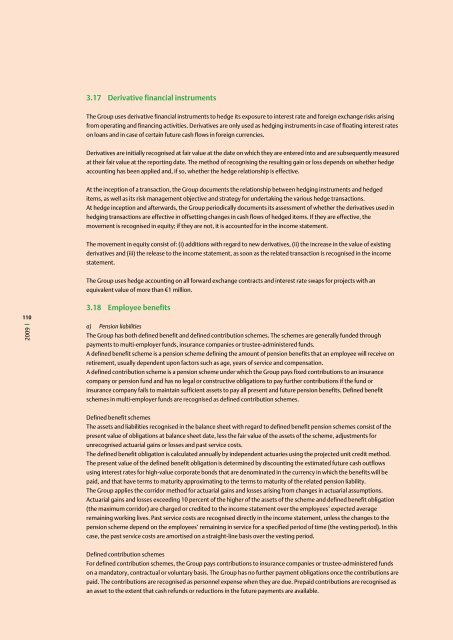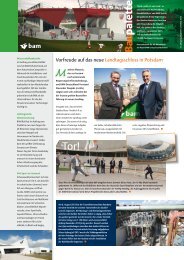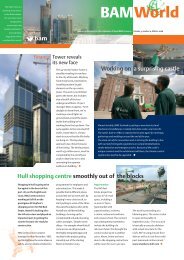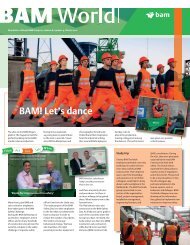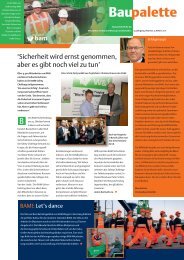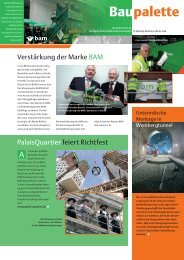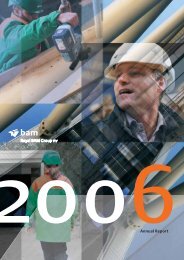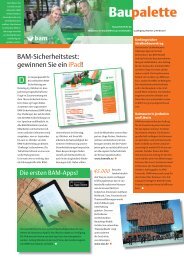Annual Report 2009 Royal BAM Group nv
Annual Report 2009 Royal BAM Group nv
Annual Report 2009 Royal BAM Group nv
You also want an ePaper? Increase the reach of your titles
YUMPU automatically turns print PDFs into web optimized ePapers that Google loves.
110<br />
<strong>2009</strong><br />
3.17 Derivative financial instruments<br />
The <strong>Group</strong> uses derivative financial instruments to hedge its exposure to interest rate and foreign exchange risks arising<br />
from operating and financing activities. Derivatives are only used as hedging instruments in case of floating interest rates<br />
on loans and in case of certain future cash flows in foreign currencies.<br />
Derivatives are initially recognised at fair value at the date on which they are entered into and are subsequently measured<br />
at their fair value at the reporting date. The method of recognising the resulting gain or loss depends on whether hedge<br />
accounting has been applied and, if so, whether the hedge relationship is effective.<br />
At the inception of a transaction, the <strong>Group</strong> documents the relationship between hedging instruments and hedged<br />
items, as well as its risk management objective and strategy for undertaking the various hedge transactions.<br />
At hedge inception and afterwards, the <strong>Group</strong> periodically documents its assessment of whether the derivatives used in<br />
hedging transactions are effective in offsetting changes in cash flows of hedged items. If they are effective, the<br />
movement is recognised in equity; if they are not, it is accounted for in the income statement.<br />
The movement in equity consist of: (i) additions with regard to new derivatives, (ii) the increase in the value of existing<br />
derivatives and (iii) the release to the income statement, as soon as the related transaction is recognised in the income<br />
statement.<br />
The <strong>Group</strong> uses hedge accounting on all forward exchange contracts and interest rate swaps for projects with an<br />
equivalent value of more than €1 million.<br />
3.18 Employee benefits<br />
a) Pension liabilities<br />
The <strong>Group</strong> has both defined benefit and defined contribution schemes. The schemes are generally funded through<br />
payments to multi-employer funds, insurance companies or trustee-administered funds.<br />
A defined benefit scheme is a pension scheme defining the amount of pension benefits that an employee will receive on<br />
retirement, usually dependent upon factors such as age, years of service and compensation.<br />
A defined contribution scheme is a pension scheme under which the <strong>Group</strong> pays fixed contributions to an insurance<br />
company or pension fund and has no legal or constructive obligations to pay further contributions if the fund or<br />
insurance company fails to maintain sufficient assets to pay all present and future pension benefits. Defined benefit<br />
schemes in multi-employer funds are recognised as defined contribution schemes.<br />
Defined benefit schemes<br />
The assets and liabilities recognised in the balance sheet with regard to defined benefit pension schemes consist of the<br />
present value of obligations at balance sheet date, less the fair value of the assets of the scheme, adjustments for<br />
unrecognised actuarial gains or losses and past service costs.<br />
The defined benefit obligation is calculated annually by independent actuaries using the projected unit credit method.<br />
The present value of the defined benefit obligation is determined by discounting the estimated future cash outflows<br />
using interest rates for high-value corporate bonds that are denominated in the currency in which the benefits will be<br />
paid, and that have terms to maturity approximating to the terms to maturity of the related pension liability.<br />
The <strong>Group</strong> applies the corridor method for actuarial gains and losses arising from changes in actuarial assumptions.<br />
Actuarial gains and losses exceeding 10 percent of the higher of the assets of the scheme and defined benefit obligation<br />
(the maximum corridor) are charged or credited to the income statement over the employees’ expected average<br />
remaining working lives. Past service costs are recognised directly in the income statement, unless the changes to the<br />
pension scheme depend on the employees’ remaining in service for a specified period of time (the vesting period). In this<br />
case, the past service costs are amortised on a straight-line basis over the vesting period.<br />
Defined contribution schemes<br />
For defined contribution schemes, the <strong>Group</strong> pays contributions to insurance companies or trustee-administered funds<br />
on a mandatory, contractual or voluntary basis. The <strong>Group</strong> has no further payment obligations once the contributions are<br />
paid. The contributions are recognised as personnel expense when they are due. Prepaid contributions are recognised as<br />
an asset to the extent that cash refunds or reductions in the future payments are available.


